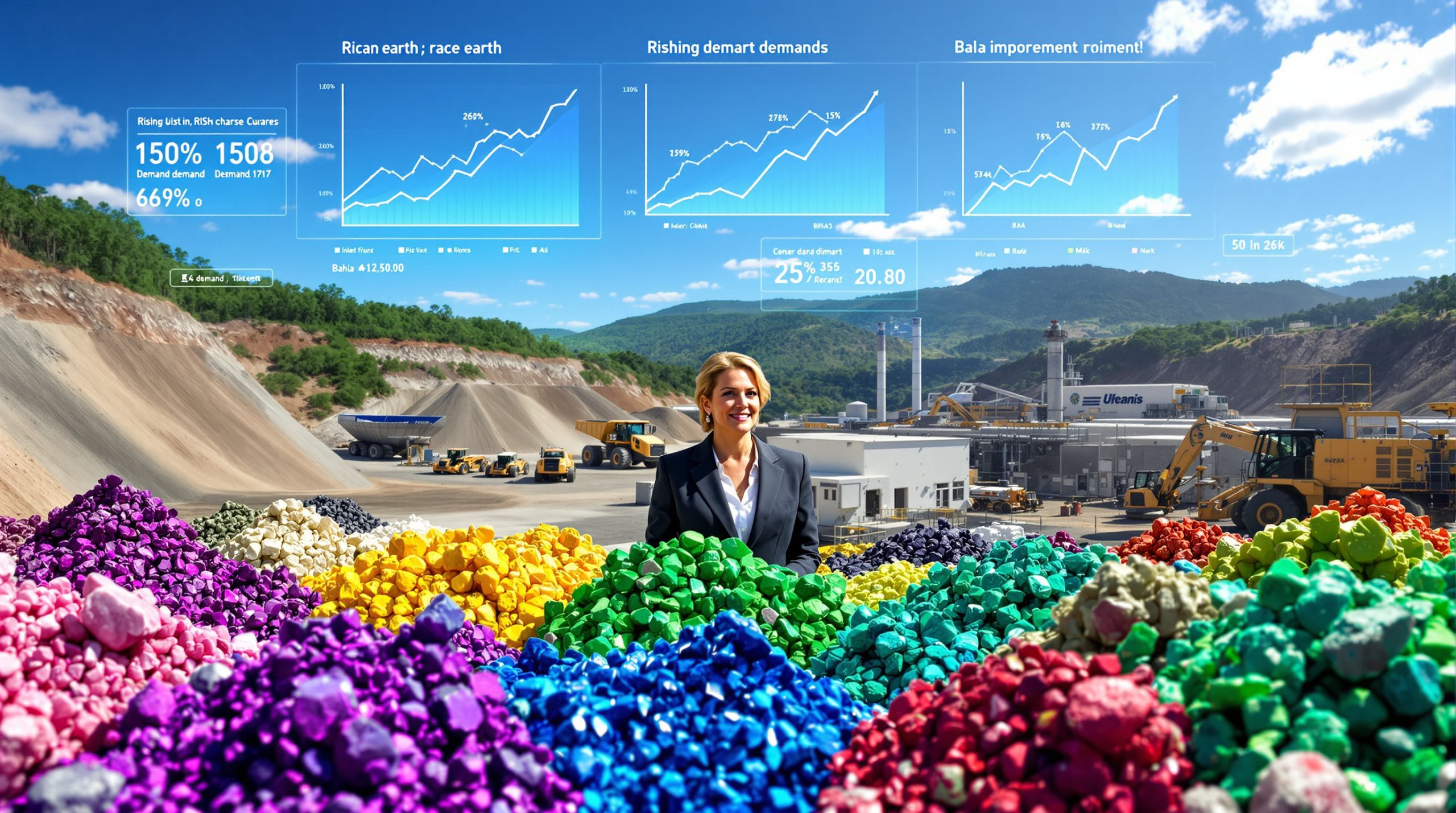Who is Mike Henry and What Has He Accomplished at BHP?
Mike Henry's tenure as BHP CEO since January 2020 has been marked by transformative leadership and strategic realignment of the world's largest mining company. As the Canadian-born 59-year-old mining veteran approaches the end of his expected six-year term by early 2026, his legacy includes fundamental restructuring and bold strategic initiatives that have reshaped BHP's portfolio and direction.
Henry has overseen several game-changing decisions that repositioned BHP for the future resources landscape. Most notably, he orchestrated the $40 billion divestiture of BHP's petroleum business to Woodside Energy Group Ltd., allowing the company to exit fossil fuels and focus more intently on "future-facing commodities" essential for the global energy transition.
Under Henry's leadership, BHP dismantled its historic dual-listed company structure, consolidating under a single Australian listing. This complex restructuring, valued at approximately $25 billion, streamlined governance and enhanced capital allocation flexibility across the organization.
Key Strategic Decisions Under Henry's Leadership
Perhaps Henry's most consequential decision was greenlighting the $12.9 billion Jansen potash project in Saskatchewan, Canada. This marked BHP's entry into a new commodity segment and represents one of the mining industry's largest greenfield developments in decades. Industry analysts note that Jansen contains over 5 billion tonnes of potassium chloride resources, positioning BHP as a potentially dominant player in fertilizer markets through the 2030s.
Henry also returned BHP to major dealmaking after years of cautious consolidation. The company's unsuccessful but ambitious $49 billion takeover bid for Anglo American Plc in early 2024 signaled renewed appetite for transformational acquisitions. While the offer was ultimately rejected, it demonstrated Henry's willingness to pursue bold mining investment strategies after a decade of industry restraint following the commodities supercycle collapse.
Henry's leadership coincided with record commodity price volatility, requiring nimble financial management. BHP maintained its progressive dividend policy while investing in growth projects and reducing net debt from nearly $25 billion to approximately $15 billion during his tenure.
Why is BHP Starting the CEO Succession Process Now?
Timing and Transition Planning
BHP's board appears to be following established succession protocols by initiating the search process approximately 18 months before Henry's anticipated departure. This timeline aligns with corporate governance best practices for companies of BHP's scale and complexity, allowing for thorough candidate assessment and a measured transition period.
New chairman Ross McEwan, who joined BHP's board in March 2025, faces the CEO selection as his first major leadership task. McEwan brings valuable transition experience from his previous roles at major financial institutions, including Royal Bank of Scotland and National Australia Bank, where he led significant organizational transformations.
According to industry sources familiar with BHP's governance practices, the board plans to identify a CEO-elect by the third quarter of 2025, enabling approximately six months of leadership overlap. This structured approach reflects lessons learned from previous mining sector transitions that proved disruptive when executed too rapidly.
Industry Context for Leadership Change
The succession process unfolds during a pivotal period for both BHP and the global mining sector. The industry faces unprecedented capital allocation challenges as demand for critical minerals accelerates while traditional commodities remain vital revenue generators.
Recent geopolitical developments have complicated the operating environment, with expanded trade restrictions affecting commodity markets. President Trump's extension of Section 232 tariffs has created significant trade distortions, particularly impacting steel and aluminum markets that directly affect demand for BHP's core products.
BHP's growth pipeline requires substantial capital commitments, with over $28 billion in projects requiring funding through 2030. These include the essential life extension of the Escondida copper mine ($10 billion), Jansen Phase 2 potash expansion ($7 billion), Oak Dam copper project in South Australia ($6 billion), and copper development projects in Argentina ($5 billion).
The company's financial flexibility has narrowed in recent years, with its gearing ratio increasing from 13.6% to 18.2%, approaching the upper limit of BHP's target range. This financial context means the next CEO must navigate competing demands for capital while maintaining the company's traditionally strong balance sheet.
Who Are the Top Contenders for BHP's CEO Position?
Internal Frontrunners
Industry analysts and company insiders identify three leading internal candidates for BHP's top position, each bringing distinctive strengths and experience profiles:
Geraldine Slattery currently leads BHP's Australian mining operations, the company's largest and most profitable division. With a background in petroleum engineering, Slattery previously managed BHP's offshore oil and gas assets before their divestiture to Woodside. Her leadership of the Australian minerals business, which generates nearly 60% of BHP's earnings, provides crucial operational credibility. She has also successfully overseen the integration of the $10 billion OZ Minerals acquisition, achieving cost synergies ahead of schedule.
Vandita Pant, BHP's Chief Financial Officer since 2023, brings a unique blend of financial expertise and commercial acumen. The former banker joined BHP in 2016 and previously served as Chief Commercial Officer before ascending to the CFO role. Pant has spearheaded BHP's cost reduction initiatives, driving nearly $4 billion in savings through centralized procurement and operational efficiencies. Her experience negotiating complex international agreements, including tax stabilization frameworks in Chile for the Escondida copper mine, demonstrates valuable diplomatic skills for navigating resource nationalism challenges.
Ragnar Udd leads BHP's commercial team after building his reputation through the company's copper operations in the Americas. With 25 years of operational mining experience, Udd's technical background aligns well with BHP's growing focus on copper as a strategic growth pillar. He has successfully managed complex stakeholder relationships, particularly in advancing the Resolution Copper project through challenging permitting and indigenous consultation processes.
Diversity Considerations
The potential appointment of either Pant or Slattery would represent a historic milestone as the first female CEO of the world's largest mining company. The mining industry has traditionally lagged other sectors in leadership diversity, with only one female CEO currently leading a major mining company within Australia's ASX200 index.
BHP has made progress on gender diversity under Henry's leadership, increasing female representation to 26% of its global workforce from 17% in 2016. The company maintains a target of reaching 35% female representation by 2025. Industry observers note that appointing a female CEO would align with BHP's stated diversity objectives while bringing fresh perspectives to an industry facing rapid digital transformation.
However, both female candidates face scrutiny regarding their operational experience in bulk commodities, which still generate over 70% of BHP's earnings. Market analysts suggest this factor could influence the board's final decision, particularly given the challenging financial environment facing the company.
What Challenges Will BHP's Next CEO Face?
Financial and Capital Allocation Pressures
BHP's next leader inherits increasingly constrained financial flexibility despite the company's historically strong balance sheet. Key financial metrics show tightening headroom:
The company is trending toward the upper boundaries of its self-imposed debt targets, with the net debt to EBITDA ratio projected to reach 1.3x in FY2025, approaching the 1.5x ceiling established in BHP's financial framework.
Dividend policy decisions will be particularly challenging, as BHP has lowered distributions to minimum payout levels under its current policy. Historical dividend yields of nearly 7% have compressed to approximately 5.2%, potentially placing pressure on shareholder returns expectations.
Rising operational costs present another significant challenge, particularly in Australia's iron-ore rich Pilbara region. Labor cost inflation has accelerated, with union negotiating activity emerging in the Pilbara for the first time in over two decades. BHP faces potential labor cost increases of 15-20% in this crucial production region, despite partial offsets from automation initiatives that have reached 60% penetration in haulage operations.
Major Growth Projects Requiring Investment
The next CEO must allocate billions in capital across multiple competing projects to maintain BHP's production profile and enable growth:
Escondida, BHP's cornerstone copper asset in Chile, requires $10 billion in investment to maintain current production levels beyond 2035. The mine's declining ore grades (from 1.5% copper to below 0.8%) necessitate significant processing capacity expansion to maintain output.
The Jansen potash project represents BHP's entry into a new commodity market, with the $7 billion Phase 2 expansion essential to achieving competitive cost positioning. Market conditions appear favorable, with U.S. potash prices doubling to $600/tonne since 2020 due to supply constraints resulting from sanctions on Belarus.
Copper dominates the growth pipeline, with the Oak Dam project in South Australia targeting 300,000 tonnes per annum production and the Resolution joint venture with Rio Tinto aiming for 550,000 tonnes annually. These projects face significant technical challenges, including mine depths exceeding 2,000 meters and complex hydrogeology.
Analysts at Jefferies Financial Group highlight that BHP may need to stagger or defer certain growth projects unless commodity prices rise significantly, creating difficult prioritization decisions for the incoming CEO.
How Does BHP's Succession Process Compare to Industry Standards?
Mining Industry Leadership Transitions
BHP's approach to CEO succession reflects evolving best practices in the mining sector, characterized by longer transition periods and increased focus on leadership diversity:
The anticipated six-year CEO tenure for Henry aligns with industry norms for major mining companies. His predecessors Andrew Mackenzie (2013-2020) and Marius Kloppers (2007-2013) served similar terms, providing leadership continuity without entrenchment.
BHP's succession planning follows the industry trend toward more structured transition processes, with approximately 70% of mining CEO appointments since 2020 going to internal candidates compared to just 50% in the previous decade. This shift reflects growing recognition of the specialized knowledge required to lead complex mining operations.
The company's consideration of both internal and external candidates, with a focus on technical and operational expertise, mirrors approaches taken by competitors like Rio Tinto and Glencore. However, BHP places greater emphasis on transition periods, planning for a 6-month handover compared to the industry average of 3 months.
Significance for the Mining Sector
The BHP CEO position is widely considered "mining's top job" given the company's market leadership and influence across the resources sector. The succession decision carries significance beyond BHP's shareholder base:
The next CEO will shape industry capital allocation priorities as mining companies collectively face over $200 billion in annual investment requirements to meet energy transition mineral demand, according to International Energy Agency estimates.
BHP's leadership transition coincides with the mining industry's broader reassessment of growth strategies after several unsuccessful mega-deals. The incoming CEO must navigate increasing geopolitical complexity, with Fitch Ratings indicating that 63% of global copper reserves are located in jurisdictions with elevated political risk profiles.
Technological disruption represents another critical challenge and opportunity, with McKinsey forecasting 20-30% productivity improvements from artificial intelligence applications in mining operations by 2030. BHP's next leader will need to accelerate digital transformation while managing traditional operational fundamentals.
What Does BHP's Financial Position Look Like for the Next CEO?
Current Financial Standing
Despite recent record profits, BHP's financial position appears increasingly stretched relative to its ambitious growth plans:
The company maintains strong liquidity with $15.2 billion in cash and undrawn credit facilities, providing essential flexibility for market volatility. However, BHP's debt maturity profile shows approximately $4 billion in annual repayments through 2028, creating consistent refinancing requirements.
BHP's credit ratings remain robust at A+/A1 (Stable Outlook), supporting favorable financing terms. However, key financial ratios indicate diminishing headroom, with the free cash flow yield declining from 6.8% to 4.2% and return on invested capital approaching the 15% minimum target.
Cost-cutting initiatives across BHP's operations represent a necessary response to margin pressure, with particular focus on the Australian iron ore business where costs have risen approximately 15% since 2020 despite productivity improvements. Analysts expect these efficiency programs to continue regardless of who becomes the next CEO.
Investment vs. Shareholder Returns Balance
The fundamental tension facing BHP's next leader involves balancing growth investments against shareholder return expectations:
The base case financial projection maintains BHP's 60% dividend payout ratio while accommodating approximately $10 billion in share buybacks through 2030. This scenario requires precise execution of capital projects to prevent budget overruns that could pressure shareholder returns.
A more conservative approach would reduce the dividend payout to the 50% policy minimum while deferring approximately $8 billion in growth projects. This strategy might preserve balance sheet strength but risks losing competitive position in key markets, particularly copper where development timelines stretch beyond a decade.
The most aggressive growth scenario would leverage BHP's balance sheet more substantially, potentially reaching 2.0x net debt to EBITDA, exceeding current policy limits. This approach would accelerate all planned projects but introduce greater financial risk during commodity price downturns.
BHP's commodity price exposure remains a critical variable, with each $10 per tonne change in iron ore prices impacting annual EBITDA by approximately $1.5 billion. The company's strategic shift toward copper means this commodity will contribute an estimated 35% of earnings by 2030 versus 25% today, increasing sensitivity to global commodities outlook.
FAQs About BHP's CEO Succession
When will BHP officially announce Mike Henry's successor?
While BHP has not published a formal timeline, the succession process is expected to accelerate in the coming months with chairman Ross McEwan leading the selection committee. Industry precedent suggests an announcement could come by late 2025, allowing for a structured transition period before Henry's anticipated departure in early 2026.
Will BHP's dividend policy change under new leadership?
BHP's dividend policy framework, with its 50% minimum payout ratio, is unlikely to change fundamentally under new leadership. However, the actual distribution amounts may fluctuate based on financial performance and capital requirements for growth projects. The next CEO will need to balance shareholder return expectations against substantial investment needs across BHP's project portfolio.
How might a new CEO impact BHP's acquisition strategy?
Following the unsuccessful Anglo American bid, BHP's approach to major acquisitions will likely be reassessed by incoming leadership. Financial constraints may favor smaller, targeted acquisitions focusing on copper assets rather than transformational deals. The new CEO will need to evaluate whether organic growth or acquisitions provide superior returns on invested capital given current market valuations.
What impact could leadership change have on BHP's stock performance?
Investor reaction to BHP's leadership transition will largely depend on whether the successor continues Henry's strategic focus or signals significant directional changes. Historical patterns suggest mining company leadership transitions typically create short-term share price volatility followed by stabilization once strategic continuity is confirmed. The market will particularly focus on capital allocation priorities and growth project execution timelines.
How might BHP's focus on commodities shift under new leadership?
The next CEO will inherit Henry's strategic emphasis on copper, potash, and iron ore as core commodities. While this tripartite focus is unlikely to change dramatically, capital allocation between these segments may evolve based on market conditions and project economics. Copper will likely remain the priority growth area given its essential role in electrification and renewable energy infrastructure, particularly as the industry advances toward mining decarbonisation goals. Furthermore, effective strategic cash management will be crucial for navigating resource market volatility as BHP prepares to start succession process for mining's top job.
Want to Capitalise on the Next Major Mineral Discovery?
Stay ahead of the market with Discovery Alert's proprietary Discovery IQ model, which instantly notifies investors of significant ASX mineral discoveries, transforming complex mineral data into actionable insights. Understand why historic discoveries can generate substantial returns by visiting Discovery Alert's dedicated discoveries page and begin your 30-day free trial today.




